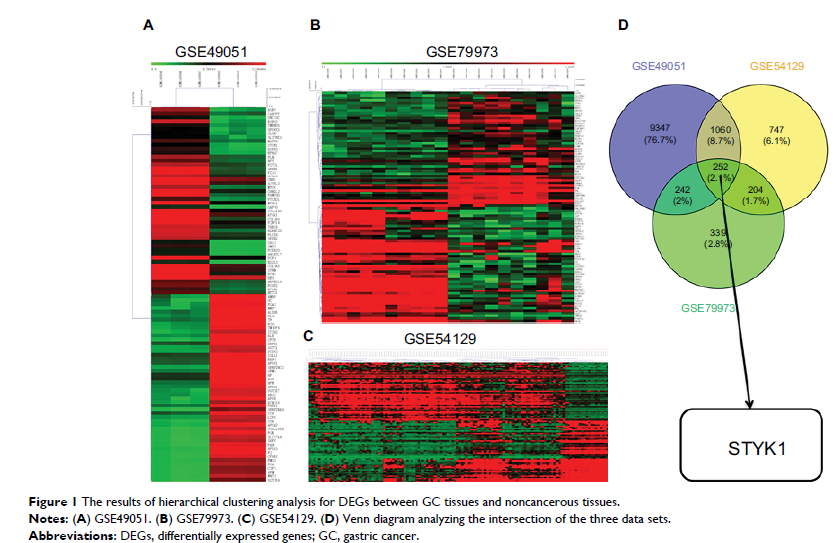108384
论文已发表
注册即可获取德孚的最新动态
IF 收录期刊
- 3.4 Breast Cancer (Dove Med Press)
- 3.2 Clin Epidemiol
- 2.6 Cancer Manag Res
- 2.9 Infect Drug Resist
- 3.7 Clin Interv Aging
- 5.1 Drug Des Dev Ther
- 3.1 Int J Chronic Obstr
- 6.6 Int J Nanomed
- 2.6 Int J Women's Health
- 2.9 Neuropsych Dis Treat
- 2.8 OncoTargets Ther
- 2.0 Patient Prefer Adher
- 2.2 Ther Clin Risk Manag
- 2.5 J Pain Res
- 3.0 Diabet Metab Synd Ob
- 3.2 Psychol Res Behav Ma
- 3.4 Nat Sci Sleep
- 1.8 Pharmgenomics Pers Med
- 2.0 Risk Manag Healthc Policy
- 4.1 J Inflamm Res
- 2.0 Int J Gen Med
- 3.4 J Hepatocell Carcinoma
- 3.0 J Asthma Allergy
- 2.2 Clin Cosmet Investig Dermatol
- 2.4 J Multidiscip Healthc

低 STYK1 表达显示了胃癌预后不良
Authors Fang J, Wang H, Fang X, Li N, Hu H, Bian M, Yang P
Received 30 July 2018
Accepted for publication 18 October 2018
Published 6 December 2018 Volume 2018:10 Pages 6669—6676
DOI https://doi.org/10.2147/CMAR.S181910
Checked for plagiarism Yes
Review by Single-blind
Peer reviewers approved by Dr Justinn Cochran
Peer reviewer comments 3
Editor who approved publication: Professor Nakshatri
Background: The expression
of serine threonine tyrosine kinase 1 (STYK1), a member of the receptor protein
tyrosine kinase (RPTK) family, is abnormal in several cancers. However, the
molecular mechanism of STYK1 regulation of gastric cancer (GC) progression is
unknown.
Materials and methods: We
evaluated STYK1 expression in GC tissues and the corresponding normal tissues.
Specimens from 93 patients with GC were examined with immunohistochemical
staining. The relationship between STYK1 protein expression and the patients’
clinicopathological features was assessed. Kaplan–Meier and Cox proportional
regression analyses were used to evaluate the association between STYK1
expression and survival.
Results: STYK1
expression was decreased in GC tissues. Low STYK1 expression was significantly
associated with poor tumor differentiation (P =0.023), advanced clinical stage (P =0.021), and poor
overall survival (OS; P =0.034). Univariate and multivariate analyses
revealed that STYK1expression was an independent prognostic indicator (HR
=0.53, 95% CI =0.29–0.95, P =0.039; HR =0.51, 95% CI =0.24–0.91, P =0.030,
respectively).
Conclusion: Downregulated
STYK1 expression correlated significantly with poor tumor differentiation,
advanced clinical stage, and poor OS in GC. STYK1 might be a diagnostic and
prognostic indicator in patients with GC.
Keywords: gastric cancer,
STYK1, prognosis, overall survival
